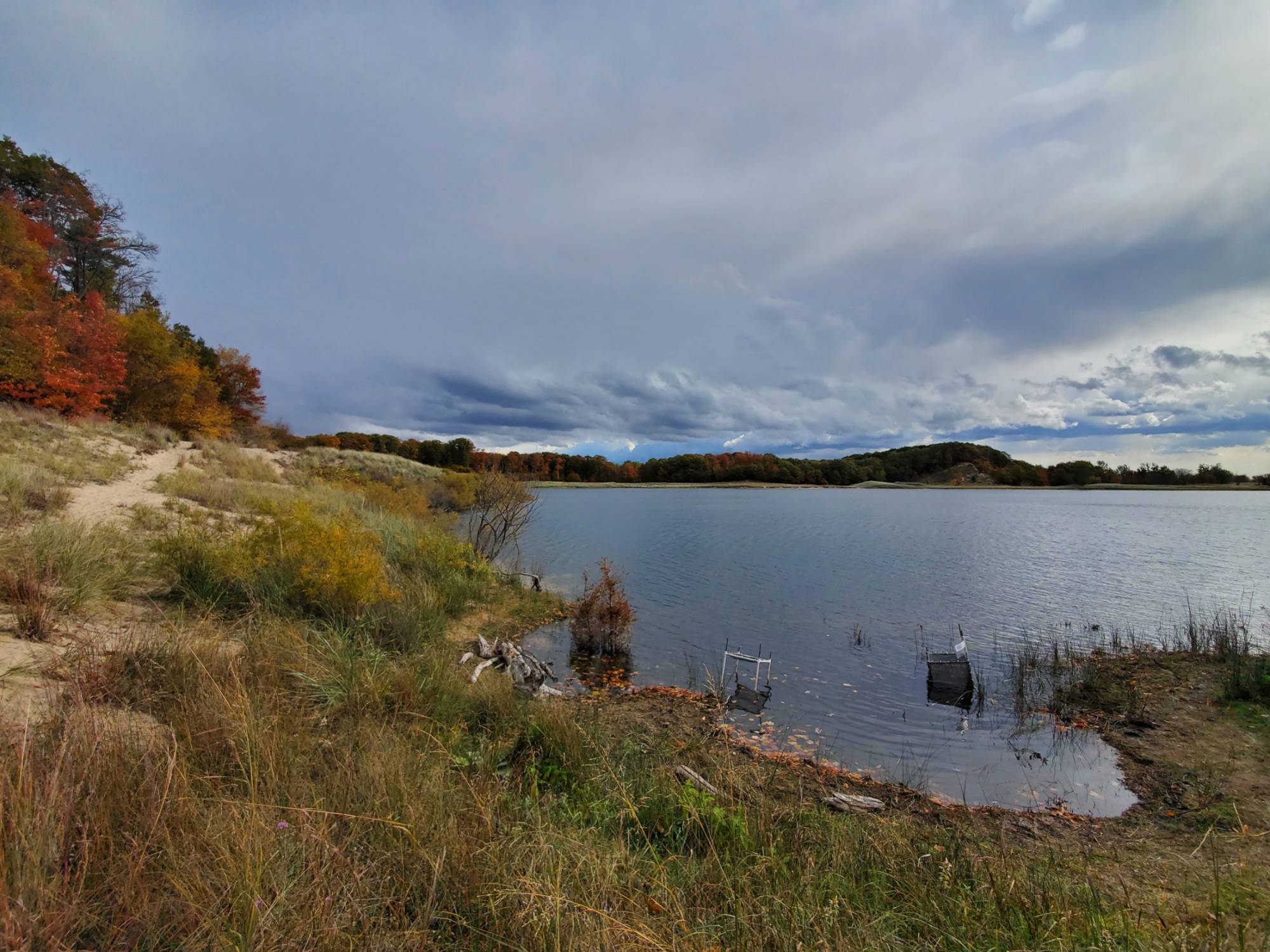Mining Matters: Predation Pressure & Water Quality in a Young Sand Mine Lake
Background
Global sand mining activity is increasing worldwide and has led to the formation of many sand pit lakes as a result of sand extraction below the water table. Although these unique, newly formed aquatic systems are becoming more prevalent due to the global demand for sand, little research has addressed their ecology and function.
The Great Lakes basin is home to ~20% of the world’s surface fresh water and the longest stretch of freshwater sand dunes on Earth, representing a unique, fragile ecosystem. Hence, there are competing demands for the protection of critical habitat for a variety of threatened and endangered flora and fauna vs. the extraction of an important natural resource. Sand mining often occurs adjacent to riverine or lacustrine systems, and as a result, mines often dip below the water table, eventually creating large pits that fill with groundwater, precipitation, or runoff, or a combination of the three - and in the process become mine pit lakes. Due to the increasing prevalence of sand mining for construction, foundry use, and hydraulic fracturing, these unique lake systems will become more commonplace despite our lack of knowledge concerning their ecological structure and function.
AWRI graduate student Katy Sheets’ thesis research is expanding understanding of sand mine lake water quality and biotic communities via surveys of water quality and macroinvertebrates. By providing insights into trophic interactions in the early successional state of these lakes and comparisons between a retired sand mine lake and a natural dune lake of comparable size, this study will provide insight into the long-term impacts of mining activity on lake ecosystems, as well as how mine lakes differ from naturally formed lakes. This project will contribute critical baseline data for sand mine lakes, which will be necessary to facilitate their future reclamation and restoration as valuable community resources.

Project Summary
Lake-wide surveys of water quality and the macroinvertebrate community will be conducted monthly from 2020 -2021 at a local retired sand mine lake (Ottawa Sands Lake) and a nearby natural dune lake (Lost Lake). Macroinvertebrates will be collected by both D-net sweeps and petite ponar samplers, and then identified by taxonomic family. An additional fish exclusion study will investigate the effects of predation on the macroinvertebrate community in Ottawa Sands Lake’s littoral zone using Hester-Dendy samplers and 0.5m × 0.5m cages that are either open to fish predation (control) or covered in 0.5cm × 0.5cm mesh that block fish access (experiment).
Funding for this project was provided by the GVSU Presidential Research Grant.
Special Thanks
Muskegon State Park
Ottawa County Parks & Recreation
Contacts
Katy Sheets, Graduate Student: [email protected]
Al Steinman, Graduate Faculty Advisor: [email protected]

